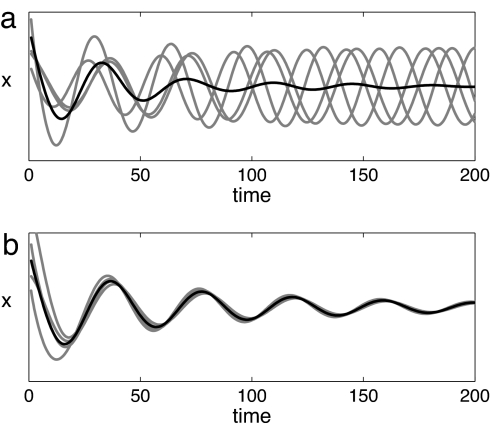Fig. 1.
Two possible explanations for the lack of collective oscillations at low cell density: simulations of populations with random initial conditions. The gray lines represent the evolution in time of four oscillators within a population (n = 100), and the black line represents the macroscopic observable, the average over the population. (a) Incoherence. Cells progressively loose their mutual entrainment, and their average is asymptotically stationary up to finite-size fluctuations. (b) Dynamic quorum sensing. Cells have a coherent motion and stop oscillating in synchrony with the medium.

